- Understanding the Causes of Wilted Tomato Tops
- 1. Water Stress:
- 2. Heat Stress:
- 3. Nutrient Deficiencies:
- 4. Disease and Pests:
- 5. Transplant Shock:
- Identifying Wilted Tomato Tops in Your Garden
- Signs of Wilted Tomato Tops
- Potential Causes of Wilted Tomato Tops
- Conclusion
- Steps to Revive Wilted Tomato Tops
- 1. Watering
- 2. Mulching
- 3. Pruning
- 4. Fertilizing
- 5. Providing shade
- 6. Disease control
- 7. Proper spacing
- 8. Regular monitoring
- Watering Techniques for Reviving Wilted Tomato Tops
- 1. Deep Watering
- 2. Mulching
- 3. Watering Schedule
- 4. Watering Technique
- 5. Water Conservation
- 6. Monitoring
- 7. Adjusting for Weather
- Pruning Strategies to Save Your Harvest
- 1. Remove Diseased Plants
- 2. Trim Off Dead or Yellow Leaves
- 3. Prune Overgrown Branches
- 4. Pinch Off Suckers
- 5. Provide Support and Tie Plants
- 6. Regularly Monitor and Prune
- 7. Dispose of Pruned Material Properly
- Implementing Nutrient Management to Restore Wilted Tomato Tops
- Protecting Wilted Tomato Tops from Pests and Diseases
- 1. Monitor and Control Pests
- 2. Practice Good Sanitation
- 3. Provide Proper Air Circulation
- 4. Mulch and Water Carefully
- 5. Utilize Companion Planting
- 6. Rotate Your Crops
- 7. Keep a Watchful Eye
- Harvesting Wilted Tomato Tops for Optimal Use
- 1. Identify the Cause of Wilting
- 2. Remove the Affected Tops
- 3. Sort and Discard Unusable Tops
- 4. Allow Tops to Recover
- 5. Utilize Recovered Tops in Recipes
- 6. Compost or Dispose of Unsalvageable Tops
- “Question-Answer”
- What should I do if my tomato plants are wilting?
- Can I revive wilted tomato plants?
- How can I prevent my tomato plants from wilting?
- What are the common causes of wilting in tomato plants?
- Can wilting tomato plants recover on their own?
- How long does it take for wilting tomato plants to recover?
- What should I do if my tomato plants are wilting but I don’t know the cause?
- “Video” 10 Common Tomato Diseases
Tomatoes are a beloved staple in gardens around the world, but even the best growers can face the disappointment of wilted tomato tops. Whether due to extreme weather conditions, disease, or lack of proper care, wilted tomato plants can be disheartening.
But fear not! There are several essential tips and techniques you can employ to revive your wilted tomato tops and salvage your harvest. By following these methods, you can give your plants the best chance to bounce back and continue producing those juicy, delicious tomatoes.
First and foremost, assess the damage. Before taking any action, it’s important to evaluate the extent of the wilted tomato tops. Are only a few leaves affected, or is the entire plant suffering? This information will help guide your approach and determine how aggressive your revival efforts need to be.
Next, provide proper irrigation. In many cases, wilted tomato tops are a result of inadequate watering. If the soil is dry and the plants are thirsty, it’s essential to give them a thorough drink. Be sure to water at the base of the plant and avoid getting water on the leaves, as this can lead to further damage or disease.
Pro tip: Consider using a drip irrigation system or soaker hose for more efficient and targeted watering.
Understanding the Causes of Wilted Tomato Tops
Wilted tomato tops can be a frustrating problem for gardeners, but understanding the causes of this issue can help you prevent and address it effectively. Here are some common reasons why tomato tops may become wilted:
1. Water Stress:
Tomatoes require consistent and adequate watering to thrive. Too much water can lead to root rot and the development of fungal diseases, while too little water can result in wilted plants. It is important to find the right balance and water tomatoes deeply but infrequently.
- Ensure that the soil is well-draining to prevent waterlogged conditions.
- Water the plants at the base to avoid wetting the foliage, which can encourage the growth of pathogens.
2. Heat Stress:
Tomato plants are sensitive to extreme heat, and prolonged exposure to high temperatures can cause their tops to wilt. In hot climates or during heatwaves, it is important to provide shade or use protective covers to shield the plants from intense sunlight.
- Plant tomatoes in areas with partial shade or use shade cloth to provide relief from the direct sun.
- Water the plants during the cooler parts of the day to help cool and hydrate them.
3. Nutrient Deficiencies:
A lack of essential nutrients can weaken tomato plants and lead to wilted tops. Nutrient deficiencies can be caused by poor soil quality or improper fertilization.
- Test the soil to determine its nutrient content and adjust fertilization accordingly.
- Provide a balanced fertilizer or amend the soil with organic matter to ensure plants receive the necessary nutrients.
4. Disease and Pests:
Various diseases and pests can attack tomato plants, causing their tops to wilt. Common issues include bacterial wilt, Fusarium wilt, and aphid infestations.
- Inspect tomato plants regularly for signs of pests or disease, such as yellowing leaves, browning stems, or wilting foliage.
- Implement appropriate pest control measures, such as using insecticidal soap for aphids or using disease-resistant tomato varieties.
5. Transplant Shock:
When transplanted into a new environment, tomato plants may experience transplant shock, which can result in wilted tops. This shock is caused by root disturbance and a sudden change in growing conditions.
- Handle tomato plants gently during transplanting and ensure they are properly watered and protected from extreme temperatures.
- Consider using a transplanting solution or fertilizer to help reduce stress and promote root growth.
By understanding these common causes of wilted tomato tops, you can take appropriate measures to prevent and address the issue, ensuring a healthy and productive tomato harvest.
Identifying Wilted Tomato Tops in Your Garden
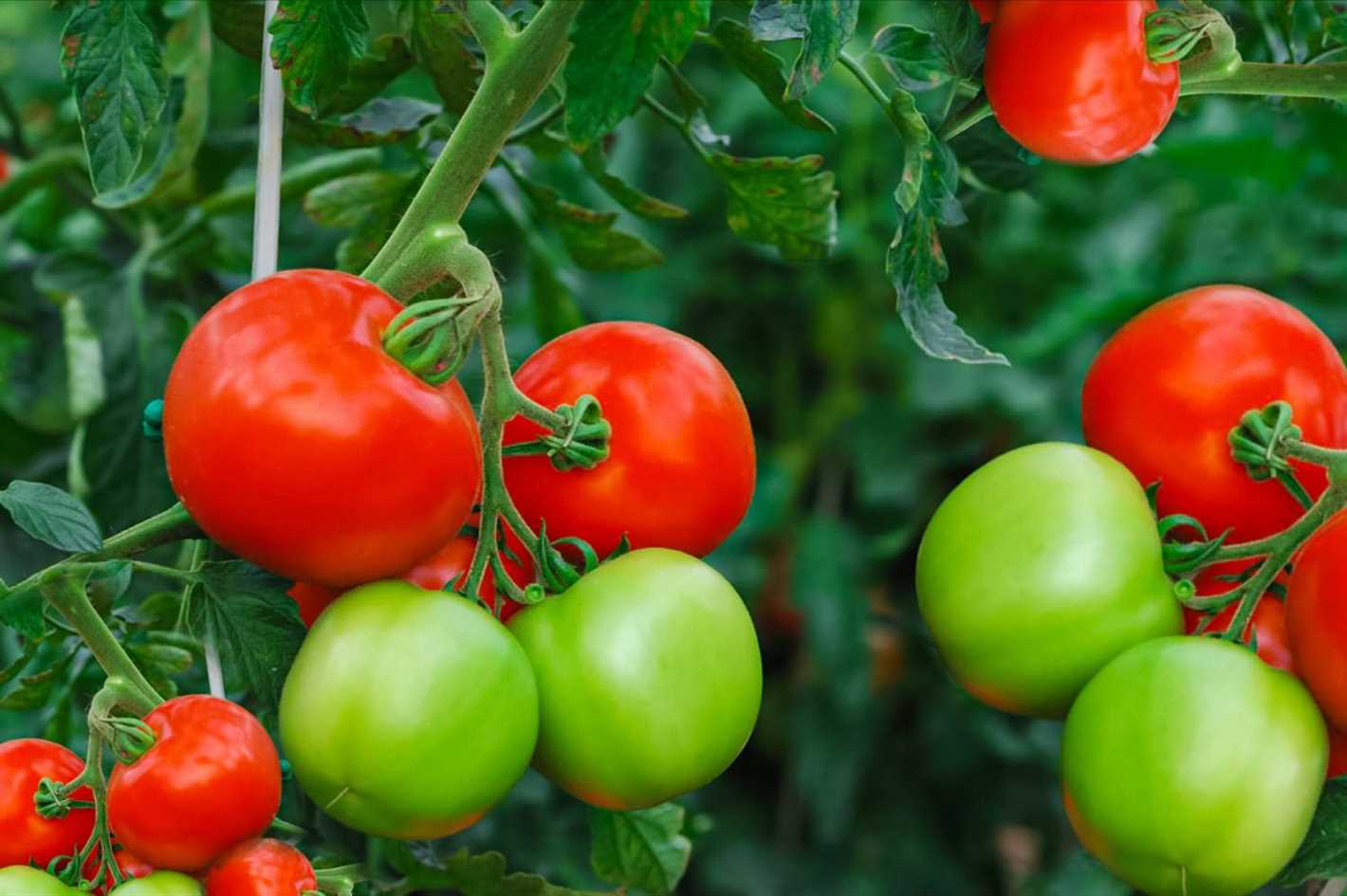
When it comes to growing tomatoes in your garden, one of the most common problems you may encounter is wilted tomato tops. This is when the top part of the tomato plant starts to droop and wither, indicating that something is wrong with the plant. It is important to identify this issue early on so that you can take appropriate measures to salvage your harvest.
Signs of Wilted Tomato Tops
There are several signs that can help you identify wilted tomato tops:
- Drooping leaves: The first sign of wilted tomato tops is when you notice that the leaves at the top of the plant are drooping and hanging down.
- Wrinkled leaves: Another sign is when the leaves appear wrinkled or shriveled, indicating that they are not receiving enough moisture.
- Brown or yellow discoloration: If the leaves at the top of the plant start to turn brown or yellow, it is a clear indication that the plant is under stress and experiencing wilting.
- Lack of new growth: Wilted tomato tops may also exhibit a lack of new growth, with no new leaves or fruits appearing on the plant.
Potential Causes of Wilted Tomato Tops
There are several potential causes for wilted tomato tops:
- Underwatering: If your tomato plants are not receiving enough water, their leaves can wilt and droop.
- Overwatering: On the other hand, overwatering can also cause the roots to become waterlogged, leading to wilting and drooping leaves.
- Pests or diseases: Some pests and diseases, such as tomato blight or aphids, can cause wilting in tomato plants.
- Nutrient deficiencies: If your soil lacks essential nutrients, it can lead to wilting and stunted growth in tomato plants.
- Extreme temperatures: Tomato plants are sensitive to extreme temperatures, and both hot and cold weather can cause wilting.
Conclusion
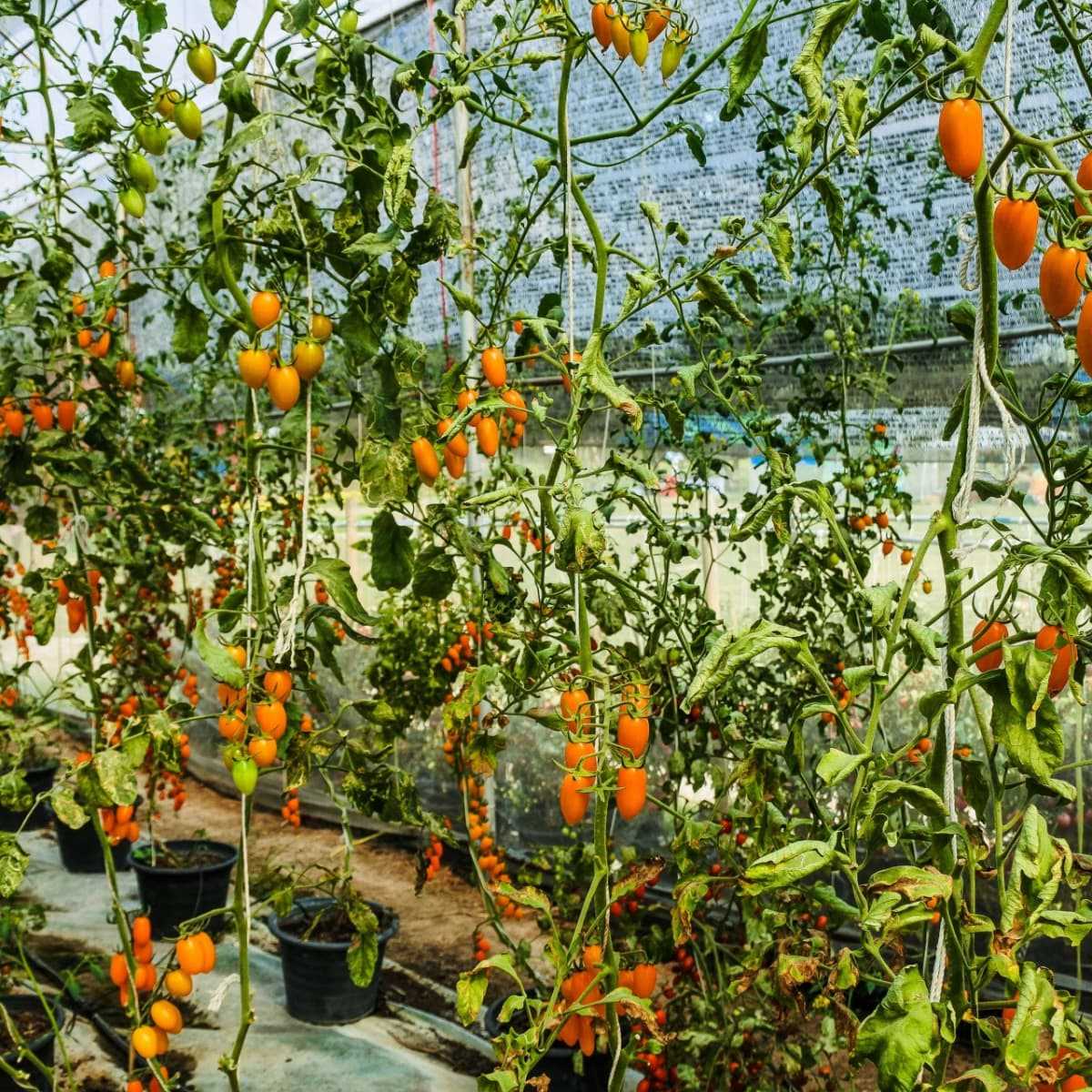
Identifying wilted tomato tops in your garden is crucial for the health and well-being of your plants. By being observant and paying attention to the signs mentioned above, you can take the necessary steps to revive your plants and salvage your harvest. Whether it’s adjusting your watering schedule, treating pests or diseases, or providing the right nutrients, addressing the root cause of wilting will help your tomato plants thrive once again.
Steps to Revive Wilted Tomato Tops
Wilted tomato tops can be a common occurrence in the garden, but with the right steps, you can revive them and salvage your harvest. Follow these essential tips to get your tomatoes back on track:
1. Watering
One of the main reasons tomato tops wilt is due to lack of water. Ensure your plants are getting enough moisture by watering them deeply and consistently. Check the soil moisture regularly and adjust your watering schedule accordingly.
2. Mulching
Applying a layer of organic mulch around the base of your tomato plants can help retain moisture in the soil and prevent wilting. Mulch also helps regulate soil temperature, keeping the roots cool during hot weather and reducing stress on the plants.
3. Pruning
If your tomato tops are severely wilted, it may be necessary to prune them back. Use clean pruning shears to remove any damaged or diseased foliage. This will allow the plant to redirect its energy towards healthy growth.
4. Fertilizing
A lack of nutrients can also cause tomato tops to wilt. Ensure your plants are receiving the necessary nutrients by applying a well-balanced fertilizer according to the package instructions. Avoid over-fertilization, as this can lead to other issues.
5. Providing shade
During periods of intense heat, tomato plants can wilt due to excessive sun exposure. Consider providing shade for your plants by using shade cloth or incorporating taller plants or structures to provide some relief from the sun’s rays.
6. Disease control
Wilted tomato tops may be a symptom of a disease, such as fusarium wilt or bacterial wilt. If you suspect a disease, remove any infected plants and take steps to prevent the spread of the disease, such as practicing crop rotation and using disease-resistant varieties.
7. Proper spacing
Proper spacing is important for good air circulation around your tomato plants. Plant them with adequate spacing to prevent overcrowding, which can lead to increased humidity and the spread of diseases.
8. Regular monitoring
Keep a close eye on your tomato plants and monitor them regularly for signs of wilting or other issues. Catching problems early on can help you take prompt action to revive your plants and salvage your harvest.
By following these steps and providing the necessary care, you can revive wilted tomato tops and ensure a bountiful harvest of delicious tomatoes.
Watering Techniques for Reviving Wilted Tomato Tops
1. Deep Watering
One effective technique for revitalizing wilted tomato tops is deep watering. Instead of giving your plants a light sprinkle, make sure the water penetrates deep into the soil. This encourages the roots to grow downwards and helps the plants withstand heat and drought stress.
2. Mulching
Using mulch around your tomato plants can help retain moisture and prevent evaporation. Apply a layer of organic mulch, such as straw or wood chips, around the base of the plants. This will keep the soil cooler and reduce water loss, allowing the wilted tomato tops to recover.
3. Watering Schedule
Establishing a regular watering schedule is essential for reviving wilted tomato tops. Water your plants deeply and evenly, aiming for consistency rather than sporadic watering. Adjust the frequency based on the weather conditions and the moisture level of the soil. Check the soil moisture by sticking your finger about an inch into the soil – if it feels dry, it’s time to water.
4. Watering Technique
When watering your tomato plants, avoid wetting the foliage as much as possible. Water droplets on the leaves can lead to the development of fungal diseases. Instead, focus on applying the water directly to the base of the plants, allowing it to reach the roots where it is needed most.
5. Water Conservation
In order to conserve water and promote healthy plants, consider using other water conservation techniques. Collect rainwater using a rain barrel and use it to water your tomato plants. Additionally, consider installing a drip irrigation system or using a soaker hose to deliver water directly to the roots, minimizing waste.
6. Monitoring
Keep a close eye on the condition of your tomato plants to ensure they are receiving adequate water. Wilting is a sign of dehydration, so if you notice any signs of wilting, adjust your watering techniques accordingly. Conversely, be careful not to overwater, as this can lead to root rot and other problems. Regularly monitor the moisture level of the soil to strike the right balance.
7. Adjusting for Weather
During extreme weather conditions, such as heatwaves or prolonged dry spells, you may need to adjust your watering techniques. Increase the frequency of waterings to compensate for the increased evaporation rates. Consider providing shade or using row covers to protect your tomato plants from excessive heat.
Remember, preventing wilted tomato tops is easier than reviving them, so implement proper watering techniques from the beginning to promote healthy and thriving tomato plants.
Pruning Strategies to Save Your Harvest
1. Remove Diseased Plants
If you notice any plants showing signs of disease, it’s essential to remove them immediately. This will prevent the spread of disease to other plants and help salvage the remaining healthy ones. Look for leaves with spots, discoloration, or signs of wilting.
2. Trim Off Dead or Yellow Leaves
Dead leaves and yellowing foliage are not only unsightly but also rob the plant of energy. Carefully trim off these leaves using clean pruning shears. Trim close to the main stem, making sure not to damage any healthy foliage or branches.
3. Prune Overgrown Branches
If your tomato plants have become unruly and overgrown, it’s important to prune them to promote healthy growth. Identify the main stem and remove any branches that are crossing, crowding, or competing with the main stem for resources. This will allow better airflow and sunlight penetration, reducing the risk of disease and promoting fruit production.
4. Pinch Off Suckers
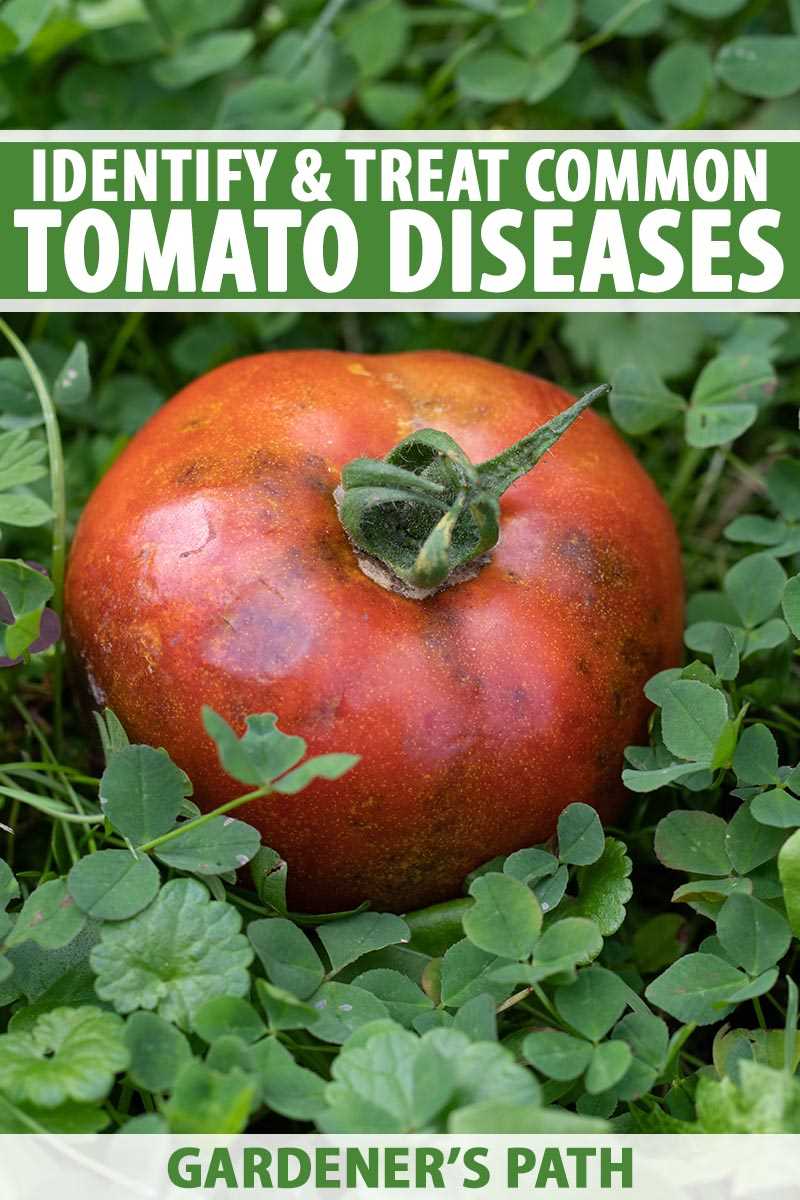
Suckers are small shoots that develop at the joint of a branch and the main stem. While they may seem harmless, they can divert energy away from fruit production. Pinch off these suckers using your fingers or small pruners to redirect the plant’s energy to the main stem and existing fruit.
5. Provide Support and Tie Plants
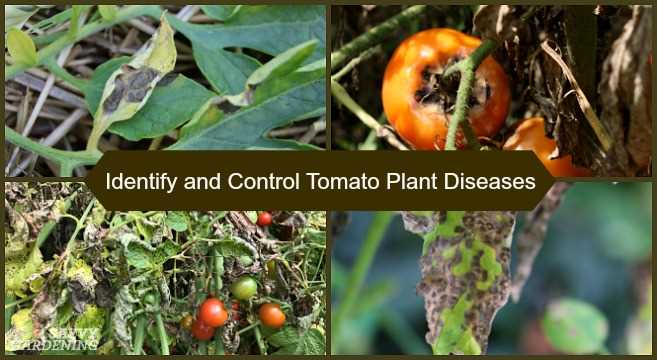
Tomato plants can become heavy with both foliage and fruit, causing them to slump or break. To avoid this, provide support by using stakes, cages, or trellises. As the plants grow, gently tie the stems to the support structure. This will help maintain proper structure and prevent damage.
6. Regularly Monitor and Prune
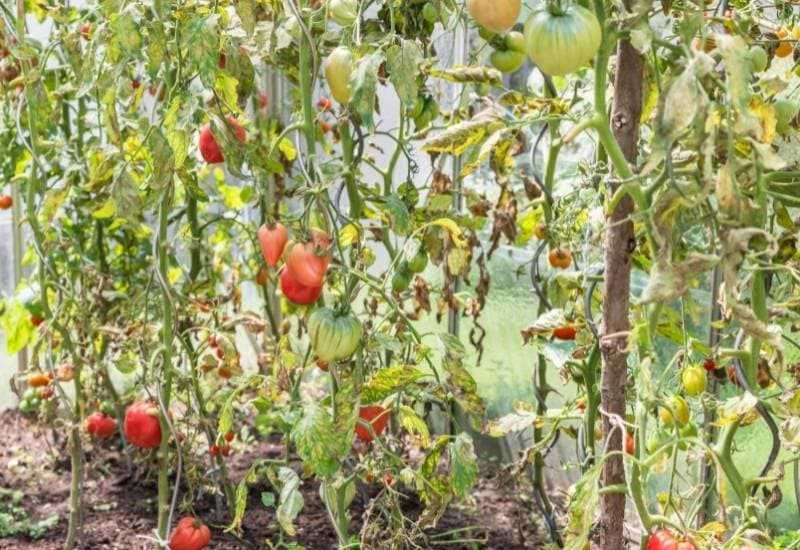
To ensure the health and productivity of your tomato plants, it’s crucial to regularly monitor and prune them throughout the growing season. Check for new growth, overcrowding, disease, or any other issues that may arise. Prune as needed to maintain a well-balanced and productive plant.
7. Dispose of Pruned Material Properly
After pruning, make sure to dispose of the pruned material properly. Remove any diseased or infested material from the garden area to prevent the spread of disease. Compost healthy pruned material or dispose of it in accordance with local waste management regulations.
By following these pruning strategies, you can revive wilted tomato tops and salvage your harvest. Remember to always use clean pruning tools, make precise cuts, and prune with caution to promote the health and productivity of your plants.
Implementing Nutrient Management to Restore Wilted Tomato Tops
When your tomato plants start to wilt, it’s often a sign that they are lacking essential nutrients. Implementing nutrient management techniques can help restore wilted tomato tops and promote healthy growth. Here are some tips to help you revive your tomato plants:
- Soil Testing: Conduct a soil test to determine the nutrient deficiencies in your soil. This will help you understand which nutrients are lacking and provide guidance on how to remedy the situation.
- Fertilizer Application: Based on the results of your soil test, apply a balanced fertilizer that is high in nitrogen, phosphorus, and potassium. These nutrients are essential for healthy plant growth.
- Organic Matter: Incorporate organic matter, such as compost or well-rotted manure, into the soil. This will improve nutrient retention and provide a steady release of nutrients to the plants.
- Mulching: Mulch around the base of the tomato plants to help retain moisture and regulate soil temperature. This will reduce stress on the plants and promote healthy growth.
- Watering: Ensure that your tomato plants receive an adequate amount of water, especially during dry periods. Proper watering will help prevent wilting and promote nutrient uptake.
- Pruning: Regularly prune your tomato plants to remove any diseased or damaged leaves. This will redirect nutrients to healthier parts of the plant and promote new growth.
- Weed Control: Keep the area around your tomato plants free of weeds. Weeds compete with the plants for nutrients and water, which can lead to wilting.
By implementing these nutrient management techniques, you can help restore wilted tomato tops and ensure a bountiful harvest. Remember to regularly monitor your plants and make adjustments as needed to provide the optimal growing conditions.
Protecting Wilted Tomato Tops from Pests and Diseases
When reviving wilting tomato tops, it’s essential to take appropriate measures to protect them from pests and diseases. These tips will help ensure the health and vitality of your revived tomato plants:
1. Monitor and Control Pests
Inspect your tomato plants regularly for signs of pest infestation. Common tomato pests include aphids, tomato hornworms, and whiteflies. If you notice any pests, take immediate action to control them. You can manually remove pests or use organic pest control methods such as neem oil or insecticidal soaps. Avoid using chemical pesticides that can harm beneficial insects and pollinators.
2. Practice Good Sanitation
Keep your gardening tools clean to prevent the spread of diseases. Disinfect pruning shears, stakes, and trellises with a solution of one part bleach to nine parts water after using them on diseased plants. Also, remove any fallen leaves or plant debris from the garden bed to eliminate potential breeding grounds for pests and diseases.
3. Provide Proper Air Circulation
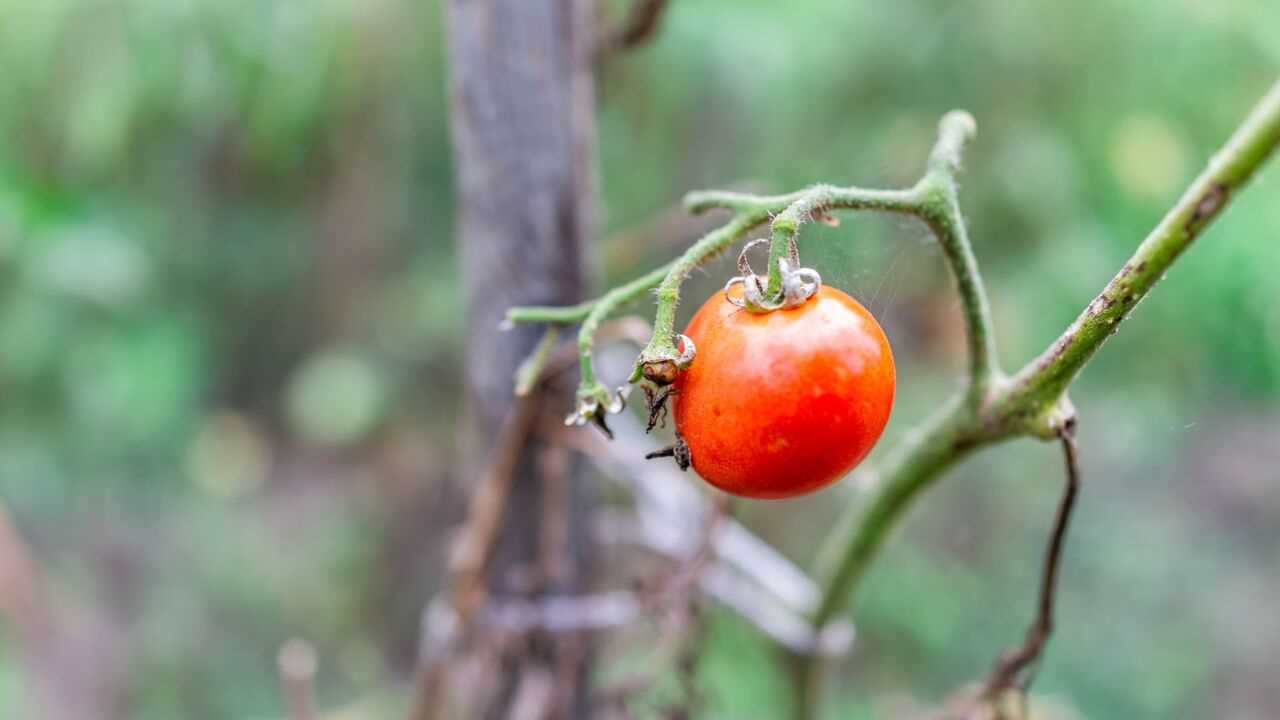
Air circulation is crucial for preventing fungal diseases such as blight. To ensure adequate airflow, space your revived tomato plants properly and avoid overcrowding. Prune any dense foliage or suckers that impede air circulation. Utilize stakes or cages to support the plants and keep them upright, allowing for better airflow.
4. Mulch and Water Carefully
Apply a layer of organic mulch around the base of the tomato plants to help retain soil moisture and prevent weed growth. When watering, avoid wetting the plant’s foliage, as this can promote the development of fungal diseases. Water at the base of the plant, preferably in the morning, so any excess moisture can evaporate during the day.
5. Utilize Companion Planting
Companion planting can help deter pests and attract beneficial insects to your garden. Consider planting marigolds, basil, or nasturtiums near your revived tomato plants. Marigolds repel nematodes, while basil and nasturtiums deter aphids and whiteflies.
6. Rotate Your Crops
Practice crop rotation to prevent the buildup of pests and diseases in the soil. Avoid planting tomatoes or other members of the nightshade family in the same spot year after year. Instead, rotate them with unrelated plants to disrupt the life cycle of pests and replenish the soil’s nutrients.
7. Keep a Watchful Eye
Continuously monitor your revived tomato plants for any signs of pests or diseases. Early detection and prompt action can prevent the spread of pests and reduce the damage they cause. Regularly inspect the plants’ leaves, stems, and fruits for any abnormality or signs of infestation.
By following these tips, you can safeguard your revived tomato tops from pests and diseases, ensuring the continued growth and productivity of your tomato harvest.
Harvesting Wilted Tomato Tops for Optimal Use
While it may be disheartening to find that your tomato plants are wilting, it doesn’t mean that all hope is lost for your harvest. In fact, there are several ways you can salvage the wilted tomato tops and put them to good use. Here are some essential tips for harvesting and utilizing wilted tomato tops:
1. Identify the Cause of Wilting
Before you start harvesting the wilted tomato tops, it’s important to understand the cause of wilting. It could be due to over or under watering, disease, or nutrient deficiencies. Once you identify the underlying issue, you can take steps to address it and prevent future wilting.
2. Remove the Affected Tops
To salvage the wilted tomato tops, carefully remove the affected parts using clean gardening shears or a sharp knife. Make sure to sanitize your tools to avoid spreading any diseases. Cut the tops off just above the point of wilting, leaving healthy stems and leaves intact.
3. Sort and Discard Unusable Tops
After removing the wilted tops, sort through them and discard any that are completely shriveled or discolored. These tops are unlikely to recover and should be disposed of properly.
4. Allow Tops to Recover
For the remaining wilted tomato tops that still look somewhat salvageable, you can give them a chance to recover. Place the tops in a bucket or container filled with water, allowing them to soak for a couple of hours. This will help hydrate the stems and leaves and potentially revive them.
5. Utilize Recovered Tops in Recipes
If some of the wilted tomato tops show signs of recovery, you can utilize them in various recipes. Chop the recovered tops and use them in salads, pasta dishes, sauces, or soups. Their flavor might be slightly affected by the wilting, but they can still add a touch of freshness and acidity to your dishes.
6. Compost or Dispose of Unsalvageable Tops
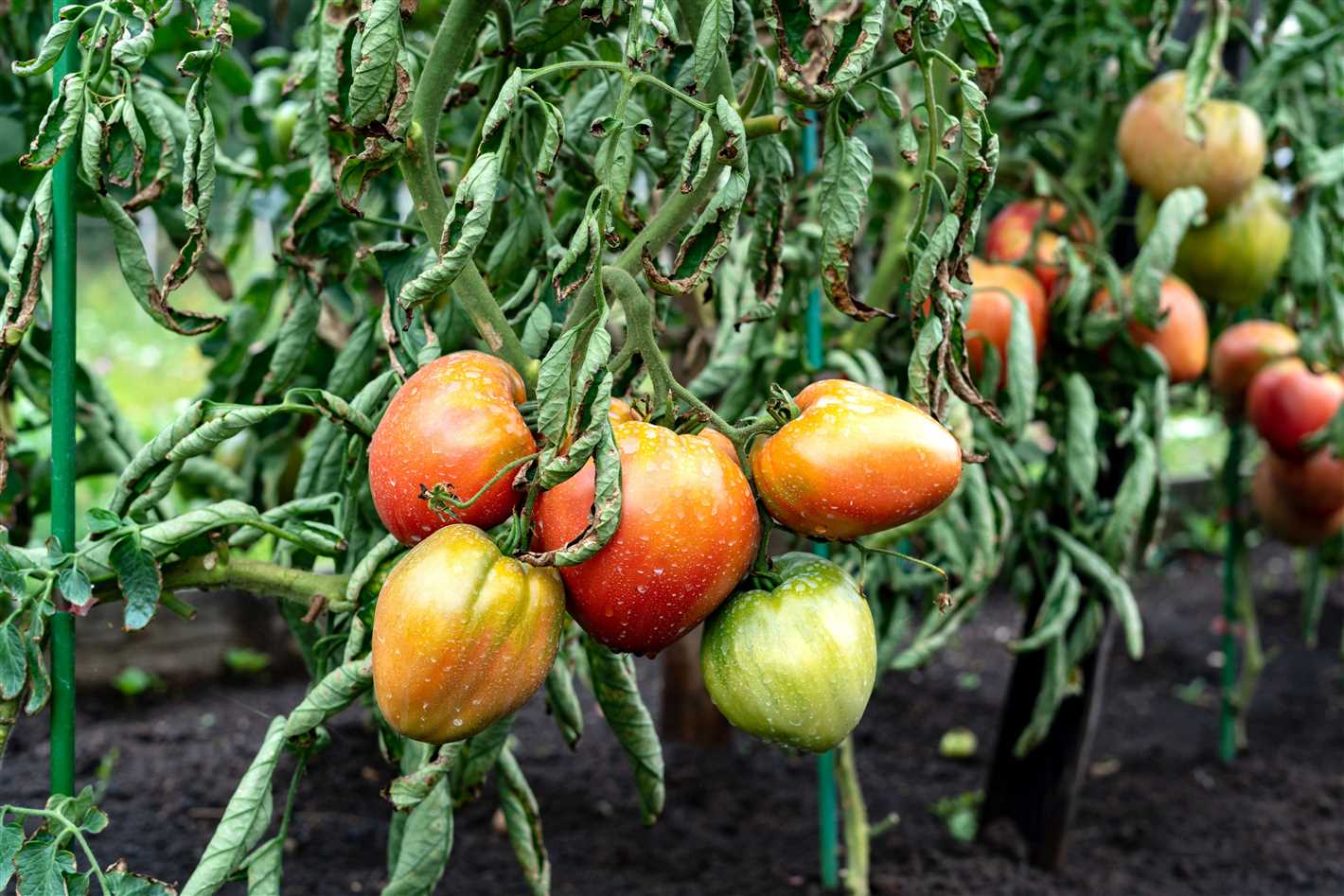
For the wilted tomato tops that couldn’t be recovered, it’s best to compost them if possible. Composting will allow the organic matter to break down and enrich your soil for future gardening endeavors. If composting is not an option, dispose of them in accordance with your local waste management guidelines.
By following these tips, you can salvage and make the most out of your wilted tomato tops. Don’t let wilting discourage you – there’s still potential for a delicious harvest!
“Question-Answer”
What should I do if my tomato plants are wilting?
If your tomato plants are wilting, it may be due to either overwatering or underwatering. First, check the moisture level of the soil and adjust accordingly. If the soil is too dry, water the plants deeply. If the soil is too wet, allow it to dry out and adjust your watering schedule. Wilting may also be a sign of disease, so it’s important to inspect the plants for any signs of pests or diseases.
Can I revive wilted tomato plants?
Yes, wilted tomato plants can be revived if you act quickly. Start by watering the plants deeply and make sure the soil is well-drained. You can also provide shade to prevent evaporation and reduce stress on the plants. If the wilting is caused by a nutrient deficiency, you can try fertilizing the plants with a balanced fertilizer. It’s important to address the underlying issue that caused the wilting in the first place to prevent it from happening again.
How can I prevent my tomato plants from wilting?
To prevent tomato plants from wilting, it’s essential to provide them with proper care. Make sure the plants are planted in well-drained soil and water them regularly, particularly during hot and dry weather. Mulching around the plants can help retain moisture in the soil. Furthermore, provide adequate support to the plants to prevent them from becoming top-heavy and wilting under their own weight. Regularly check for signs of pests or diseases and take appropriate action to prevent any issues.
What are the common causes of wilting in tomato plants?
There are several common causes of wilting in tomato plants. Overwatering or underwatering can lead to wilting, as can excessive heat or direct sunlight. Nutrient deficiencies, such as lack of nitrogen or potassium, can also cause wilting. Pests and diseases, including bacterial wilt, fusarium wilt, or root rot, are other common causes. It’s important to properly diagnose the cause of wilting in order to take appropriate action and revive the plants.
Can wilting tomato plants recover on their own?
In some cases, wilting tomato plants can recover on their own if the underlying issue is resolved. If the plants are wilting due to underwatering or overwatering, adjusting the watering schedule and providing proper drainage can help them recover. If the wilting is caused by nutrient deficiencies, fertilizing the plants can aid in their recovery. However, if the wilting is caused by a severe disease or pest infestation, the plants may not be able to recover without intervention.
How long does it take for wilting tomato plants to recover?
The time it takes for wilting tomato plants to recover will depend on the underlying cause of the wilting and the severity of the issue. If the wilting is due to a lack of water or nutrients, the plants may start to recover within a few days to a week after appropriate measures are taken. However, if the wilting is caused by a disease or pest infestation, the recovery time can vary significantly and may require longer-term treatment and care.
What should I do if my tomato plants are wilting but I don’t know the cause?
If you’re unsure about the cause of wilting in your tomato plants, it’s best to start by checking the moisture level of the soil and adjust your watering accordingly. If the soil is too dry, water the plants deeply; if it’s too wet, allow it to dry out. Provide shade to reduce stress on the plants and protect them from excessive heat. If the wilting persists or worsens, it may be necessary to consult a local gardening expert or extension office for help in diagnosing and treating the issue.







